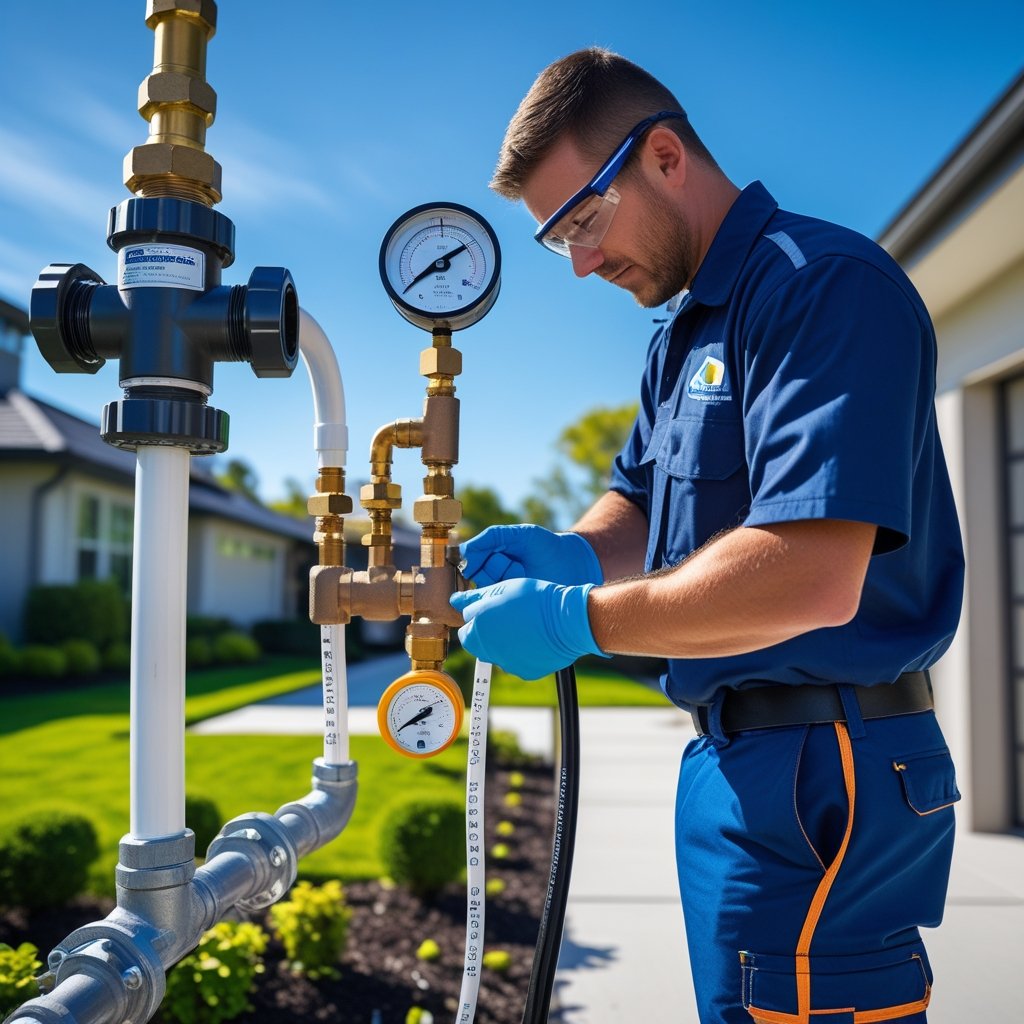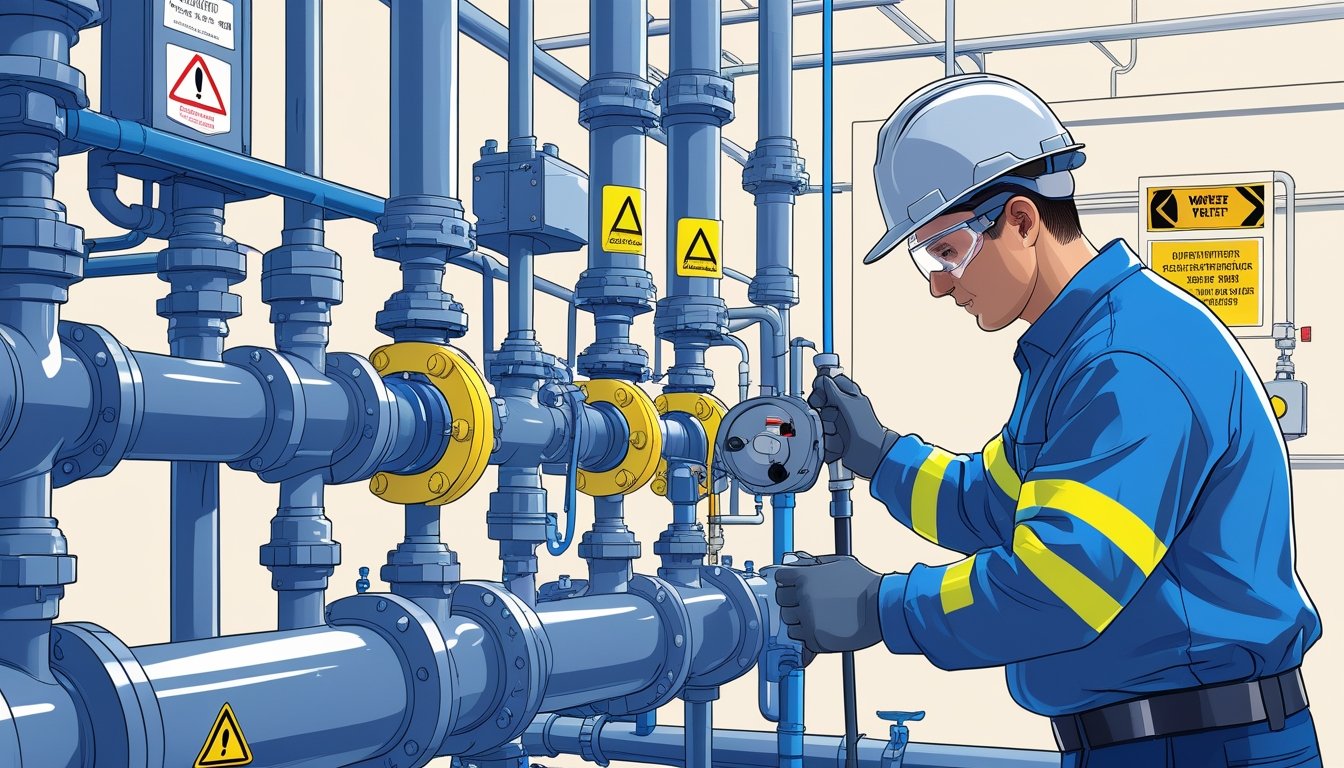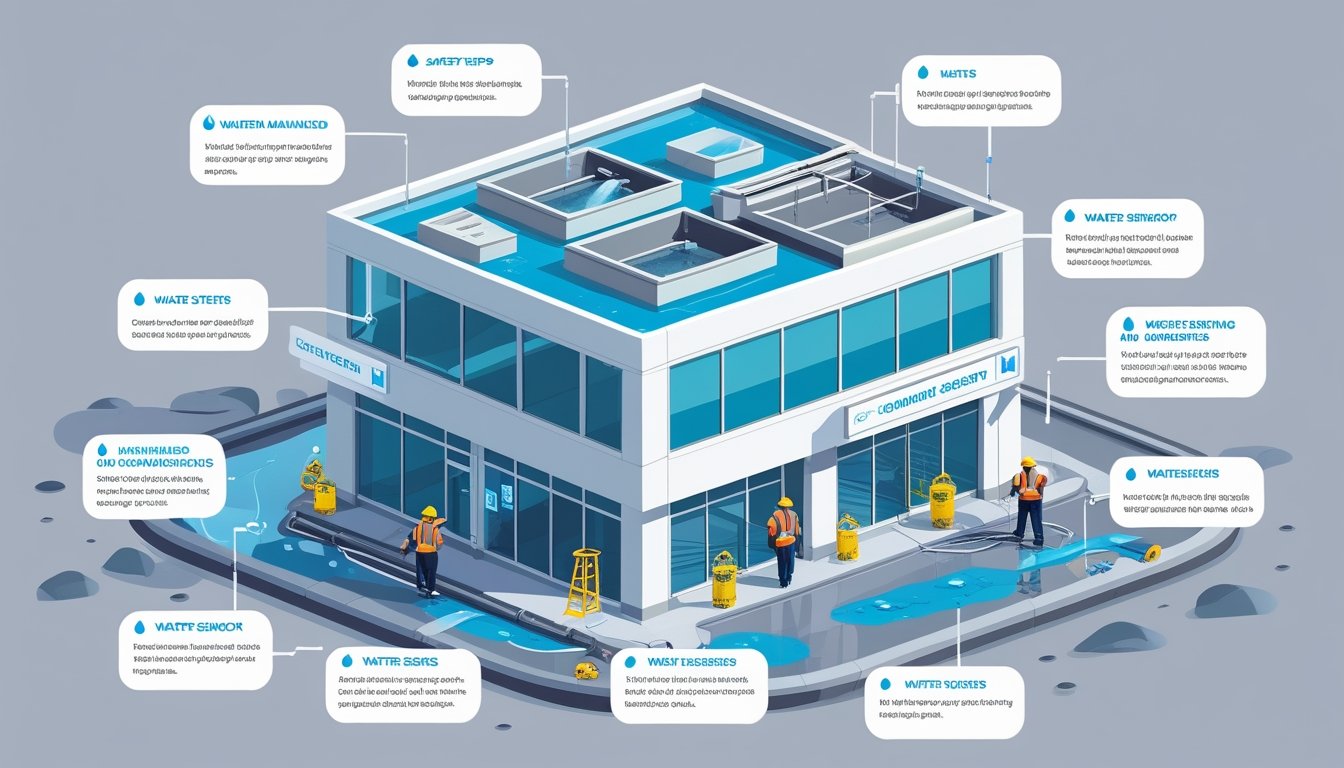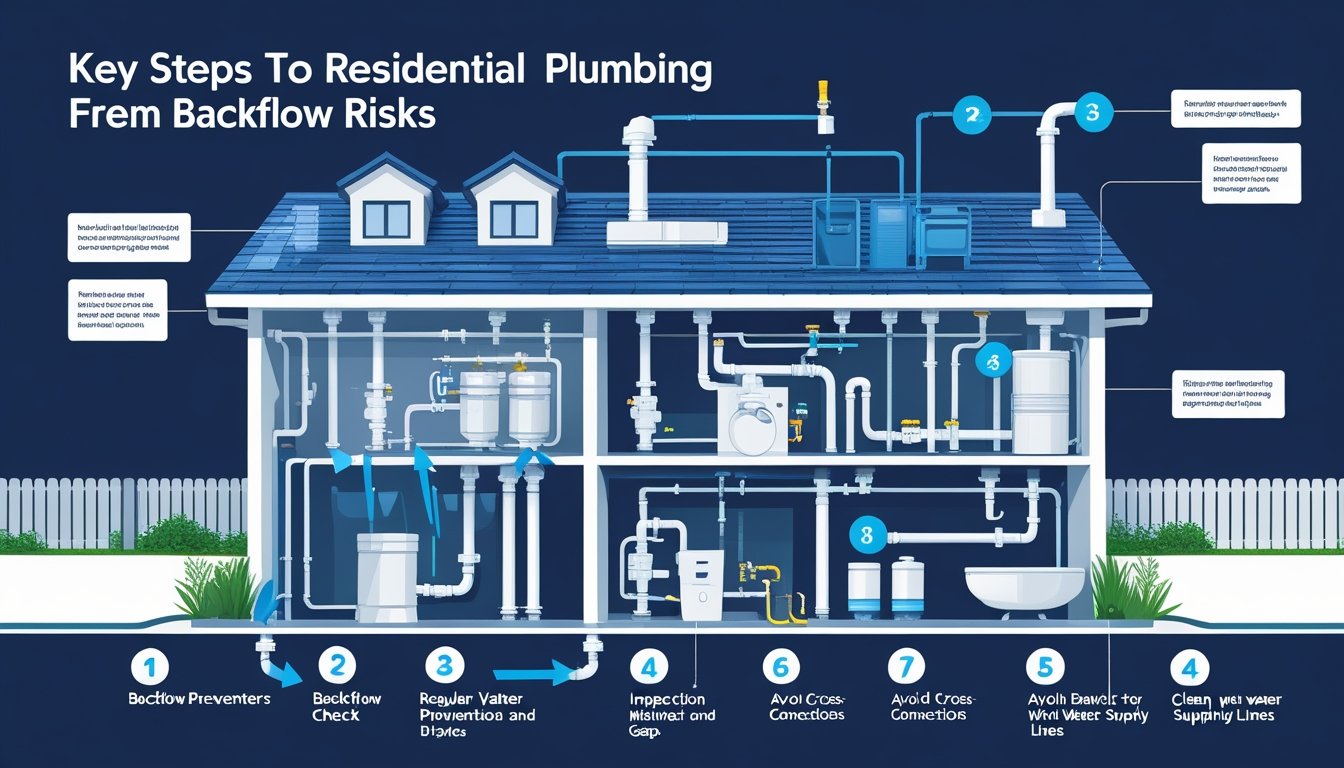When it comes to backflow testing, a lot of folks aren’t sure who’s actually responsible for making sure it gets done. Most of the time, it’s up to the property owner or landlord to test and maintain backflow devices so the water stays safe and local rules are followed. This covers everything beyond where your property hooks into the public water system.
If you live in an apartment or commercial building, the landlord or property manager usually takes care of the testing. Regular backflow testing stops dirty water from sneaking back into your clean supply—nobody wants that. At Pacific Backflow, we help property owners all over San Diego County with fast, reliable testing and handle the paperwork, too.
Understanding Backflow Testing
Backflow testing checks the devices that keep dirty water out of your clean water supply. Understanding how this works, why it matters, and what kinds of backflow preventers you might have helps you keep your water safe and follow the rules. It also helps you plan for repairs or maintenance when something goes wrong.
What Is Backflow Testing
Backflow testing checks if your backflow preventer is working. This device keeps water from flowing backward and contaminating your clean water. During a test, a technician hooks up special tools to see if everything’s working as it should.
You’ll usually need to get this test done once a year, or whenever your local water authority says so. If the device fails, you’ll need to repair or replace it to keep your water safe. Regular testing helps you avoid expensive damage and keeps your water good for drinking, cooking, and, well, everything else.
Importance of Backflow Testing
Backflow testing matters because it keeps your home’s water from getting contaminated. Without it, chemicals or bacteria could end up in your pipes—nobody wants to drink that. This risk goes up if you’ve got irrigation, boilers, or fire sprinklers hooked to your water line.
Most states and local areas actually require testing by law. If you skip it, you could get hit with fines or other headaches. Besides the rules, it’s just smart to keep your family and neighbors safe. Regular tests also help catch problems before they turn into big, expensive messes.
Types of Backflow Preventers
You’ll find a few main types of backflow preventers out there:
- Air Gap: Basically a physical gap between your water supply and any possible contaminant—simple and effective.
- Double Check Valve Assembly (DCVA): Uses two check valves to block backflow; pretty common in homes.
- Reduced Pressure Zone (RPZ) Device: Adds a relief valve for extra protection; you’ll see these more in commercial or high-risk spots.
A good technician will know what you’ve got and how to test or fix it. At Pacific Backflow, we make sure your preventer meets safety and legal standards so your water stays clean.
Who Is Responsible for Backflow Testing
So, who actually has to deal with backflow testing? Usually, the main responsibility falls on property owners, but facility managers and tenants play their parts too.
Property Owners’ Legal Obligations
If you own the place, you’re on the hook for testing and maintaining backflow devices. This goes for commercial buildings, apartment complexes, and even single-family homes with certain water setups. The law usually says you have to get testing done every year to keep contaminated water out of the clean supply.
You’ll also need to fix or replace any devices that don’t pass. Most local water districts want you to file test results, and if you don’t, you could get fined or even have water service interrupted. Hiring pros who know the rules—like Pacific Backflow in San Diego County—takes the stress off your plate.
Roles of Facility Managers
If you manage a commercial building or a property with multiple units, it’s your job to make sure backflow testing happens on time. You might not own the place, but you handle maintenance and make sure everything’s safe for people in the building.
You’ll coordinate with certified testers to schedule inspections and repairs. Keeping records of tests and related work is key for compliance. Facility managers are the go-between for owners, tenants, and service providers to keep the water supply safe.
Tenants’ Responsibilities
Tenants aren’t usually responsible for backflow testing directly. But if you spot leaks or notice changes in water quality, let the property owner or manager know ASAP.
If your lease spells out certain plumbing or maintenance duties, you might have a small role. Otherwise, just staying alert and reporting issues helps keep everything running smoothly and everyone safe.
Licensed Professionals and Certified Testers
You really want a licensed, certified pro handling your backflow testing. Only they can make sure your system gets checked right and follows local rules. Knowing what makes a good tester—and how to pick one—protects your water and keeps you out of trouble.
Qualifications Required for Backflow Testers
Backflow testers have to complete state-approved training—both classroom and hands-on. Look for someone who’s passed both written and practical exams, so you know they actually understand how these devices work.
Certified testers usually hold a Backflow Prevention Assembly Tester license or something similar. These credentials mean they know the local codes and standards. In most places, only certified testers can submit the official reports you need for compliance.
How to Choose a Certified Backflow Tester
Find someone fully licensed with a few years of experience under their belt. Ask if they’ll handle the paperwork and file test results with the right water authorities—saves you a headache.
Pick a tester who communicates clearly and responds quickly. Fast scheduling and honest explanations of any repairs make life easier. In San Diego County, Pacific Backflow’s known for reliable service that helps you stay on the right side of the law. Double-check that your tester uses up-to-date equipment and can help in a pinch if there’s an emergency.
Local Authorities and Regulations
Local rules decide how backflow testing works in your area. These rules keep your water clean. Water utilities enforce them and help property owners figure out what they need to do.
Municipal Requirements for Backflow Testing
Most cities and towns want you to get your backflow prevention devices checked by a certified professional every year. It’s all about avoiding contamination of the public water supply.
Municipalities will usually tell you which devices need testing, but the rules can vary. Check with your local water authority to stay in the loop. If you’re in San Diego County, Pacific Backflow can help you meet the standards.
If you skip testing, you might get fined or even lose water service until you catch up. Staying on schedule protects your property and your community’s health.
Enforcement by Water Utilities
Water utilities don’t mess around with backflow testing rules. They’ll often send reminders when testing is due and expect you to send proof once it’s done. If you don’t, you could face penalties or even have your water shut off.
Only licensed testers can do the work, and utilities check their reports to be sure your system passes. Some utilities even offer resources to help you pass inspection.
Working with your utility keeps your water safe and helps you avoid expensive problems. Pacific Backflow can submit reports straight to local authorities, so you don’t have to worry about deadlines.
Scheduling and Record Keeping
You have to make sure your backflow preventer gets tested on time and all your paperwork’s in order. Staying organized can save you from fines and keep your water safe.
When to Schedule Backflow Testing
You’ll need to get backflow testing at least once a year. Some places have specific deadlines, so check with your water district to be sure.
It’s smart to schedule your test a few weeks before it’s due. That way, if something needs fixing, you’ve got time. Don’t wait until the last minute—delays could mean fines or, worse, unsafe water.
Set a yearly reminder or use a service like Pacific Backflow if you don’t want to track dates yourself. They’ll handle everything and make scheduling simple.
Documentation and Reporting Procedures
After your backflow device is tested, keep the test records for at least three years. Local water authorities will probably ask for them if there’s ever a question.
The company or technician usually files the test report with the city or water district, but make sure you get a copy for your own files.
If the test finds problems, the report will list what needs fixing. Keep all your paperwork somewhere safe and handy—just in case.
Good record keeping keeps you compliant and helps you avoid penalties. It also proves your water supply is protected.
Consequences of Non-Compliance
If you skip backflow testing, you could face real problems—both for your health and your wallet. Risks to your drinking water and fines can pile up fast.
Health and Safety Risks
If you don’t test your backflow device every year, contaminants like bacteria or chemicals could slip into your water. That can cause serious health problems for you, your family, or tenants.
Backflow preventers can fail without warning if you don’t keep up with testing and maintenance. This is especially risky in commercial properties or multi-unit buildings where lots of people depend on safe water.
Ignoring testing can lead to waterborne illnesses and hurt community health. Keeping your device in shape protects everyone who uses the water.
Fines and Legal Penalties
If you don’t submit backflow test results, you’ll probably get fined—often starting around $500 and going up if you keep ignoring it. Some cities tack on daily penalties until you get it done.
In bad cases, your water provider could shut off your service, which can really mess up your home or business.
You’re responsible for keeping your backflow preventer tested and maintained. If you’re in San Diego County, Pacific Backflow can help you stay compliant and avoid headaches.
Tips for Ensuring Compliance
Know your local rules for backflow testing. Most places want annual tests to keep water safe and avoid fines. Staying informed helps you steer clear of surprises.
Keep a schedule for testing and maintenance. Put a reminder on your calendar so you don’t miss important dates.
Work with certified technicians—like the folks at Pacific Backflow. They know how to test, repair, or replace your devices. Using pros keeps your system working and your water safe.
Keep all your paperwork—test reports, repair records, emails from your water authority. Having everything organized makes it easy to prove you’re following the rules.
Here’s a quick cheat sheet:
StepWhy It Matters Schedule Annual TestsAvoid fines and health risksUse Certified ExpertsEnsure proper testing and repairKeep Records OrganizedProve compliance if neededPrompt RepairsFix issues before causing harm
Protect your backflow devices from damage or theft. Some places even offer cages or covers for extra security, which can save you from costly replacements.
If you get a test notice, don’t wait—take care of it quickly. The faster you respond, the easier it is to stay compliant and keep your water safe.
Pacific Backflow helps you through the whole process. Their team covers all of San Diego County with quick, reliable testing and reporting. You can count on them to make compliance less of a hassle.
Frequently Asked Questions
Backflow testing keeps your water safe and helps you follow the law. People often wonder who needs to handle the testing, how often it’s required, and what the rules are for hiring pros. You might also want to know if your property needs testing and how to get local help.
What entities are accountable for conducting backflow tests?
Property owners usually have to make sure backflow tests actually happen. That means homeowners, business owners, and folks running apartment buildings. Landlords often take care of it for rentals, but not always—sometimes tenants get stuck figuring it out.
If you’re in a homeowners’ association (HOA), the HOA might wrangle testing for shared systems, though it’s worth double-checking so nothing slips through the cracks.
How often are property owners required to schedule backflow inspections?
In most places, you’re looking at yearly backflow testing. It’s not just bureaucracy; annual checks help catch issues before they get out of hand and keep the water supply safe. Still, local rules can be a little quirky, so it’s smart to ask your city or water district what’s actually required.
Are there specific qualifications that backflow testing professionals need?
Absolutely. Only certified testers are allowed to do these inspections. Professionals—like the crew at Pacific Backflow—go through training, get licensed, and know how to test and fix backflow devices. You want someone who’s qualified, or you might end up repeating the whole process if the city rejects your results.
Is backflow testing mandatory for all residential and commercial properties?
Most properties with backflow prevention devices need regular testing. That usually covers commercial buildings, and a lot of homes—especially if there’s an irrigation or sprinkler system in play. Some smaller homes without any cross-connections might not need it, but honestly, local rules can surprise you. Always check with your city or water supplier.
Whom should I contact for scheduling a backflow test in my area?
Just reach out to a certified backflow testing company or technician nearby. In San Diego County, Pacific Backflow handles everything—scheduling, testing, even filing the paperwork with your water agency. Makes life easier, honestly.
Can municipalities provide assistance with backflow testing responsibilities?
Municipalities tend to focus on enforcing the rules, but they don’t usually handle the testing themselves. Still, lots of cities offer guidelines, lists of certified testers, and info on legal requirements. Not sure where to begin? Try reaching out to your local water department—they’re often pretty helpful.











